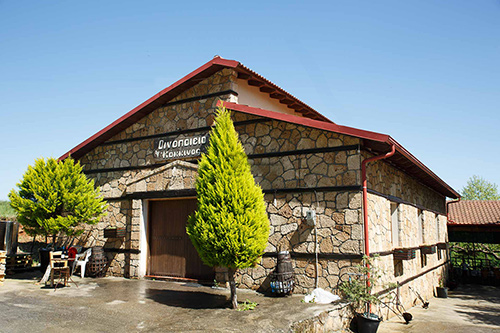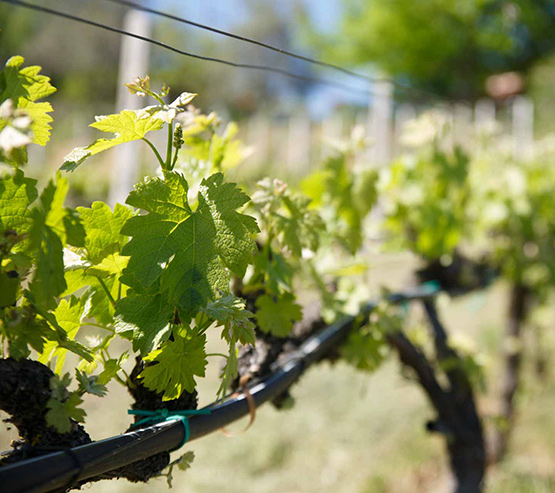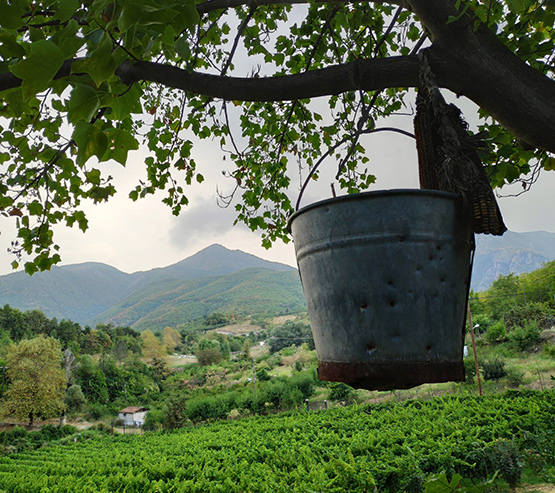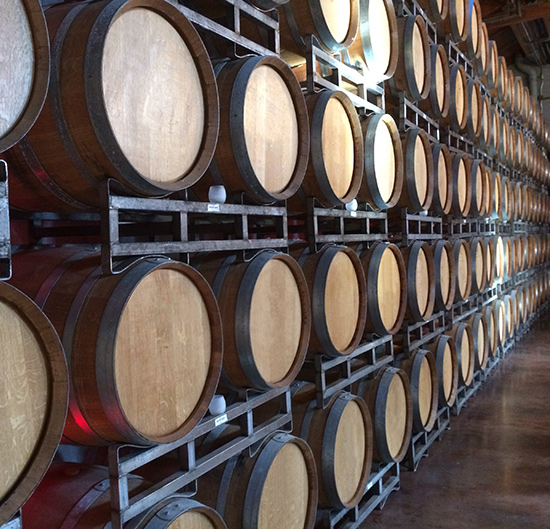The Winery
Kokkinos Winnery
The winery facilities are located in the outskirts of the historic town of Naoussa in Greece just 1.5km from the city centre in the region of Dalamari, on the way to the traditional village of Arkochori.
Stavros Kokkinos – first generation producer & winemaker, envisioned and actualized a “boutique” winery by its first bottling in 2009.
In the winery premises, where the vinification process and the bottling is taking place, there is also an underground cellar with French 225lit oak barrels and a traditionally decorated reception hall and the distillation apparatus.
The privately-owned vineyards are located in the P.D.O. zone of Naoussa in the areas of Paliokalias and Dalamari.
We proudly present our 5 labels of the indigenous grape Xinomavro
- Kokkinos, Red Dry Wine, P.D.O. Naoussa (100% Xinomavro)
- Paliokalias, Red Dry Wine, P.D.O. Naoussa (100% Xinomavro) – Single Vineyard
- Black Rooster, Red Dry Wine (blend of Xinomavro 70%, Merlot 20% & Cabernet Sauvignon 10%)
- Pink Rooster, Rose Of Dry Wine (100% Xinomavro)
- White Rooster, blanc de noir ( 80% xinomavro & 20% chardonnay)

The Variety – Xinomavro
Xinomavro is considered to be the best red grape variety in Northern Greece and one of the most important in Greece in general. Due to the long history of cultivation in various soil and climate conditions, Xinomavro is highly varied. Until now, 5 clones have been isolated, with 3 more important than Velvento and 6 by Giannakohori. It is a very lively and productive variety, with medium sensitivity to pests, very susceptible to drought with late sprout development and late harvest.
In the area of Naoussa, Xinomavro is vaccinated mainly in subjects 110R and 41B (in the last decade, however, subjects such as 1103P or SO4 have begun to be used).
Most of the vineyards are irrigated. The forming system applied is Royat with a foliage height ranging from 80 – 150 cm and a planting density of 2,500 – 4,000 plants / acre.
All of these factors can lead to large variations in the quality of production, even in vineyards with the same climatic and soil characteristics. However, the most important factor determining quality is the production per plant, ranging from 2 to 5 kilograms of grapes.
The Ground
The lands of Naoussa were formed during the Pleiocean and Pleistocene seasons. In most of these soils, the presence of CaCO3 is fluctuating. Ophium-rich rocks rich in magnesium and poor in potassium, shale and marble are also mentioned. The mechanical composition of the soils is sandy, clayey and clayey. The pH ranges from 5 (acidic soils) to 8.8 (alkaline soils).
The Climate
According to the Koeppen scale, the climate of the region is characterized as temperate Mediterranean with mild continental trends. The average rainfall is 650 mm and the largest amount of rain falls during winter and spring.
The altitudinal fluctuations and the relief of each region create what is referred to as mesoclima. Vermio, which stands in the northern part of the Naoussa region, provides protection from the winds (either very cold or very hot), while the southern part of the area is more vulnerable.
The Location – Naoussa, Greece
According to written reports, vineyards and wine production in Naoussa go back to the 16th century when the whole area was under Ottoman domination. At that time, the wines of Naoussa were considered to be the best of the empire.
Until the early 20th century, most of these wines had been exported to many parts of Europe and North Africa. The invasion of phylloxera in the 1920s resulted in the abandonment of the vineyard, which was transplanted in the 1970s.
Today, Naoussa is one of the most important places of viticulture in Greece. It is located in Central Macedonia at an altitude of 80-350 m. The Naoussa vineyard, with a total area of approximately 5,000 acres, is dominated by the indigenous Xinomavro variety grown for wine production under the “Protected Designation of Origin Naousa”.

Plot of Paliokalias
Altitude: 100-180m.
Type of subjects: 110R
Planting year: 1975
Planting density: 350 plants / acre
Orientation: east to north-east
Slope: The slope of the soil is mild and ranges from 10-12%
Soil type: The soil of the parcel is derived from old deposits of conglomerates, parent material of clayey clayey with pieces of flysch and limestones. Soil rich in magnesium, normal in calcium and poor in potassium. It belongs to the Entisols category.
Usually in such soils, Xinomavro has a high alcoholic strength, acidity satisfying the variety, color and body moderate to rich depending on the amount of production. Soft tannins. Particular aromatic character of banana, violet, passion fruit. Wines have a very good structure and long aging potential.
Plot of Dalamari
Altitude: 400 m
Type of subjects: 110R
Planting year: 2004
Planting density: 350 plants / acre
Orientation: Southeast
Slope: The slope of the parcel is slightly steep and ranges from 5-15%.
Soil type: Moderate potassium content, no CaCO3 (calcite), deficient in organic matter and high iron content.
In such soils Xinomavro reaches moderate levels of phenolic maturity and the resulting wines have good ruby color, good body, high acidity, medium to high alcoholic strength, fruity aromas. Generally good structure and moderate aging potential.


The Wine Making Process
We use classic red vinification.
The grape pulp is led to the extraction bin where the fermentation begins. When the grape pulp is passed through the fermentation tanks to the fermentation tanks, it begins to knead at a controlled temperature of 24-28C.
At the beginning of the fermentation, the marc (peels and pips) ascend to the top of the tank produced by the so-called CO2 (carbon dioxide). They form the so-called “hat”. Using a pump, the must is pumped from the bottom of the tank and driven back again. There it is allowed to fall and wet the marc (wetting). Extraction for an aging wine will take 8-12 days. The fermented must (or wine depending on the extraction duration) is transferred to another tank where the alcoholic fermentation is completed.
After the fermentation is complete, 2-3 transfusions are made within a period of 6 months.
Now the wine is brought to barrels, where it is stored for at least 12 months. Our winery uses 225 liters of French Ermitage barrels.
After bottling the wine will remain in the bottles for another 12 months before it is placed on the market.


